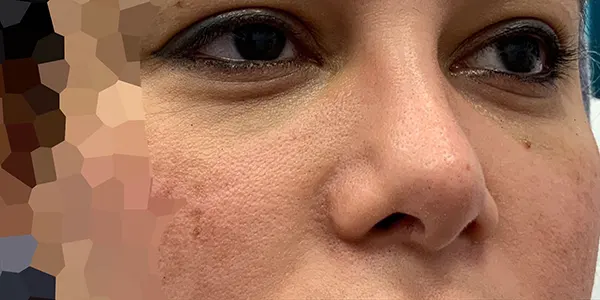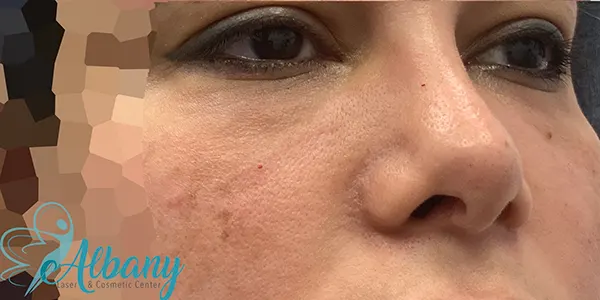Under Eye Fillers Results, Case Study
Histological skin changes and underlying structures result in different facial aging signs, especially in the under-eye area. Even though these signs are inevitable, some people show them earlier than others due to other factors such as lifestyle, diet, comorbidities, etc.
Our practice showed that under-eye and tear trough issues are the most common cosmetic concerns of facial aging in both males and females. The reason for under-eye wrinkles and bags is fat resorption in the periocular areas. The uneven light reflection, caused by the fat atrophy, results in a darker shade of colour, which exaggerates the cosmetic concern.
Since the under-eye bags are due to the loss of fat pad in the area, dermal fillers under the eyes and in the tear trough area result in partial restoration of the fullness and alleviate the concern. The procedure is considered a good alternative to invasive lower blepharoplasty.
Case 1036 Under eye fillers
The client is a female in her mid-50s. We took her full medical history, and she has no contraindications for fillers. Her main concern is the tired look due to under-eye bags.
The procedure of under-eye fillers
We used 0.5 ml of low cross-linked 20mg/ml hyaluronic acid on each side. To pinpoint the entry, we relied on the crossing between the lateral limbus vertical line and the ala-tragus horizontal line. We used a 22G hypodermic needle to puncture the epidermis and a 25G blunt cannula to insert the filler directly. Dr. Alhallak (Ph.D.) directed the cannula to the tear trough area and placed the fillers in different layers by rotating the tip of the cannula. With the tip pointed up, we could place the HA filler more superficially. Since HA fillers are highly hydrophilic, we recommend using a low cross-linked filler and aim for a slight under-correction to allow for some water absorption.
Results
The procedure made the clients look refreshed due to the fat volume restoration of the ogee curve, which resulted in even light. The results typically last 8-12 months.
Acknowledgments: Albany Cosmetic and Laser Center team


